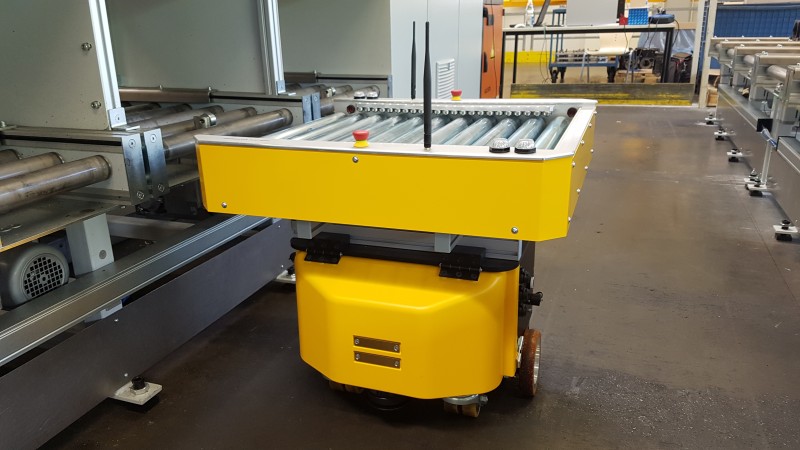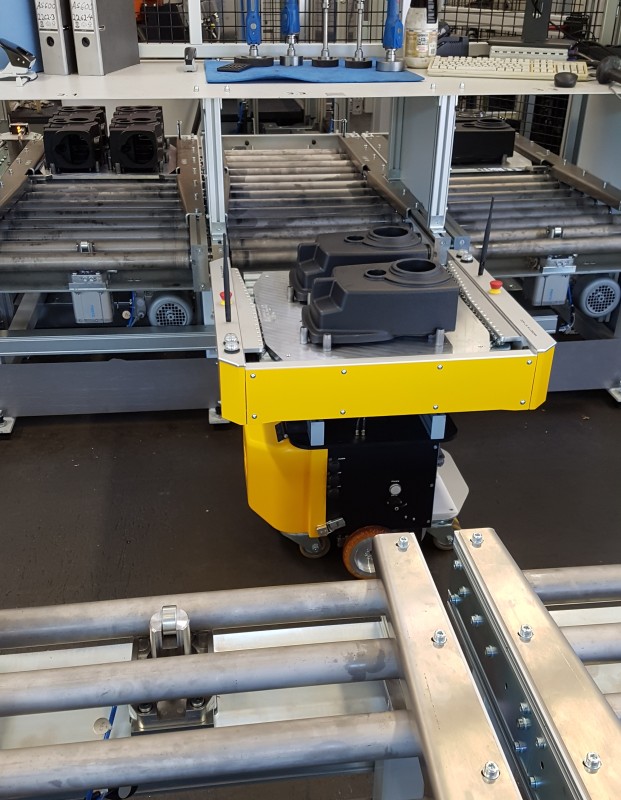
MT-400 Transport Robot Feeds Robot Cells
NORD DRIVESYSTEMS is a renowned drive manufacturer located in Gadebusch, Germany. In 2015, NORD DRIVESYSTEMS acquired an autonomous mobile robot MT-400 from Neobotix in order to increase the efficiency of the production line. The main task of the robot is to transport heavy components. In 2018, a second MT-400 was installed to further extend and expand their production line. Since then, the robots have been working 24/7, with the exception of a single shift per week.
The main task of the transport robots is to transport heavy gearbox housings between the central robot cells and the intermediate storage. After the earlier production steps are finished the gearbox housings are temporarily stored on a range of roller conveyors. Each part is then fetched in the correct sequence by the MT-400s and fed into the robot cells' input conveyors. Once finished, the parts are transferred again from the robot cell to intermediate storage by the MT-400 and onwards to further processing via another conveyor line.

Reliable, Asynchronous Supply
By utilizing autonomous robots for transportation, the robot cells have been decoupled from previous asynchronous processes, allowing them to run continously and be optimally utilized.
Additionally, this hybrid concept saves valuable floor space and offers maximum flexibility. Classic roller conveyors ensure efficient transport over longer, consistently maintained distances while simultaneously providing the necessary buffer space for the system to work through an entire shift without user intervention. On the very narrow available space in front of the conveyors, the mobile robot is be able to connect with all the conveyors without any issues. By receiving source and destination information directly from the ERP system through the installed software framework, the robot is then guided to the relevant conveyors, which it navigates and connects to as necessary.
Constructing conveyors to transport the gearbox housings would have been extremely complex, requiring large and complicated installations and resulting in significantly more maintenance and operator interventions.